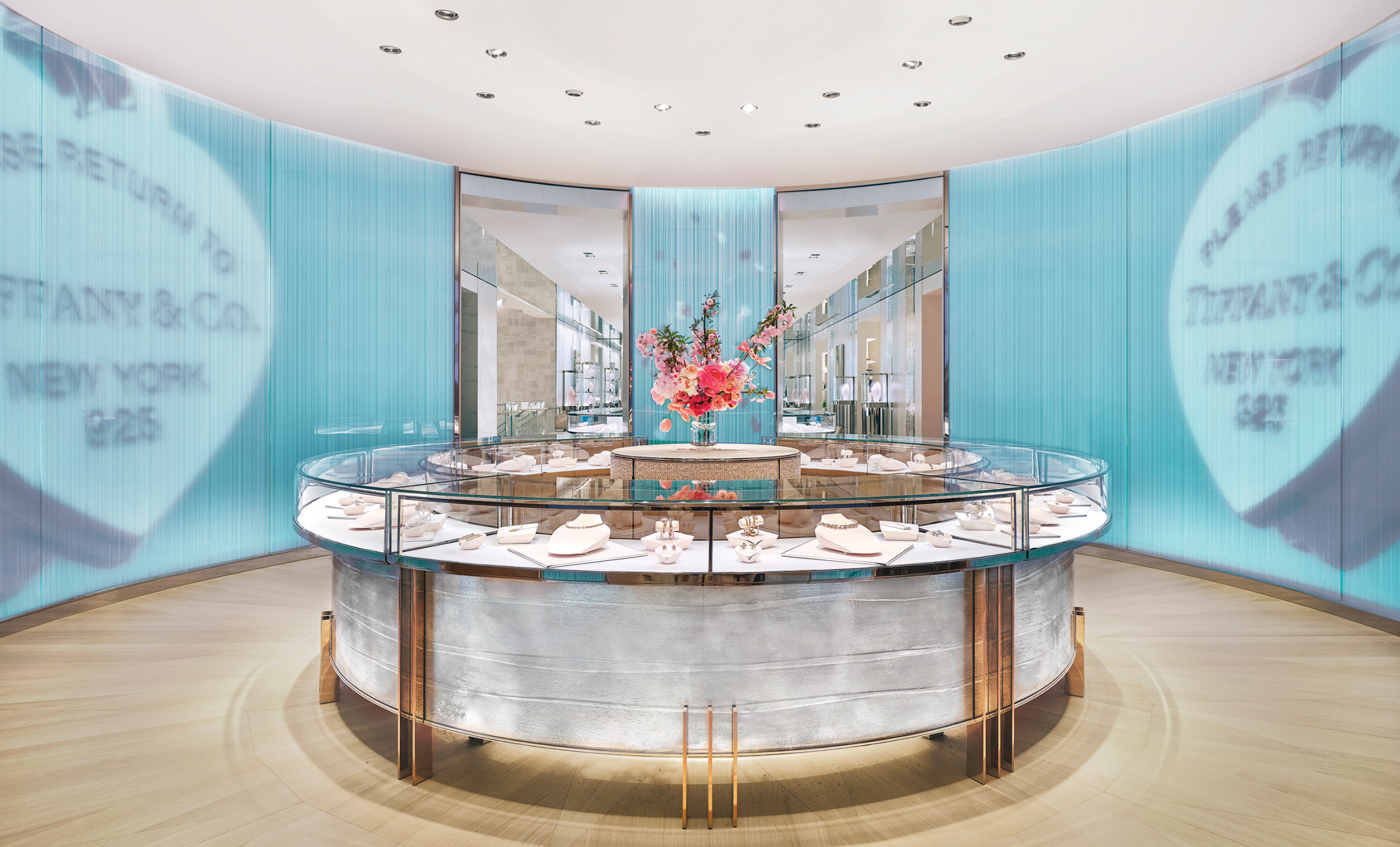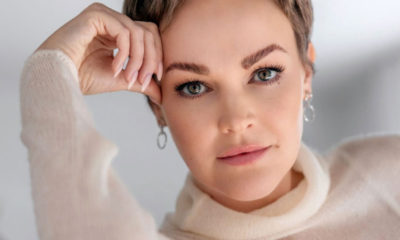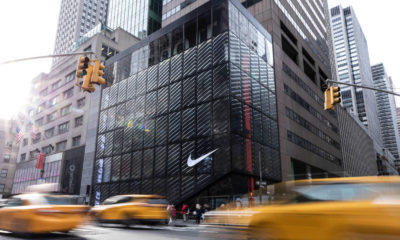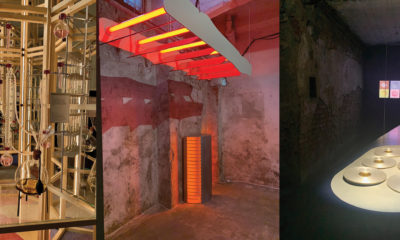📷 COURTESY OF TIFFANY & CO.
AS WE APPROACH the close of 2023 and I step into the pages of VMSD, my thoughts are deeply immersed in pondering the elusive essence of what truly gives spaces meaning.
This past year has been a journey through a diverse tapestry of experiences, from thought-provoking conferences to new retail, hospitality and culinary delights. I’ve also had the opportunity to explore and evaluate numerous projects for awards in retail, hospitality and aging living environments – all while reflecting on the profound impact of Covid-19. Though more than three years have transpired, the pandemic’s echoes continue to resonate and influence our lives as we usher in 2024.
The pandemic catalyzed a remarkable evolution – our adaptability. We anticipated that our environments evolve with us to always strive for a harmonious interaction between the physical, the digital and the human elements.
As we move forward, the industry must consider the importance of creating and maintaining a balance between these elements (physical, digital, human) to create more meaningful built environments.
BRICK-AND-MORTAR
At the heart of transformation is the physical environment itself. It encompasses architecture, urban planning, landscaping, interior design, branding and, ultimately, storytelling. While conventional viewpoints often dissect spaces in terms of their form and function, the true enchantment is in how these spaces make us feel – this is the commonality among successful projects. Skilled designers and creatives understand that spaces are not mere visual spectacles but “living” experiences to be loved and enjoyed. This extends to our quest to repurpose vacant spaces to redefine their significance and breathe new life into them.
Advertisement
What we also need to consider is the impact of built environments. Climate change is ever-present, and the call for sustainable architecture resounds urgently. We must design and build with an unwavering commitment to eco-friendly materials and technologies, recognizing the symbiotic relationship between our creations and the planet.
Biophilia is an ideal example of sustainable design: Beyond its ability to bring natural elements indoors, biophilia has been demonstrated to reduce stress, enhance cognitive function and stimulate creativity. The Refinery at Domino Sugar Factory is a prime example of excellence in preservation as well as modern, sustainable design. The 1856 Romanesque Revival-style facility once was the home to Domino Sugar Factory that shipped raw sugar South daily. Now, a 15-story, 460,000-square-foot office building (designed by Practice for Architecture and Urbanism, with landscaping by Field Operations), its barrel-vaulted glass structure melds history, engineering and sustainability through an adaptive reuse project.
Aesthetics, too, play a pivotal role in shaping places. Thoughtful selection of natural materials, the incorporation of green spaces and the celebration of cultural and historical narratives elevate appeal. A well-crafted space possesses the profound ability to positively influence its occupants and bestow a sense of well-being and comfort. The act of stepping into a thoughtfully designed space can be a soothing balm to the soul. However, accessibility ought to be a cornerstone of any meaningful physical environment. Our spaces must be designed to ensure inclusivity and transform the concept from a buzzword to reality.
THE DIGITAL AGE
Technology continues to assume an ever-growing role in our lives. We are seamlessly embedding digital experiences into the very fabric of our physical environments, enhancing connectivity, convenience and efficiency. Smart cities, the heralds of this digital transformation, optimize services such as transportation and energy management, making our urban spaces more accessible and sustainable. AR and VR technologies add new layers, like historical insights, providing immersive architectural experiences.
The Internet of Things (IoT) infuses a different kind of life into spaces, connecting them to the digital realm and shaping intelligent homes and buildings to adapt to occupants’ needs. When considering our increased dependency on the seamless integration from online to app to store, we must be transparent and deliberative in creating a flawless consumer journey.
That is not the case with most brands, and it’s an area for opportunity. From online product search and education to virtual or in-store personalized appointments, the integrated experience should be seamless and convenient without being over-engineered and robotic. Money and time well invested can create a valued experience, ensuring loyalty and return visits.
Advertisement
Advertisement
A HUMAN TOUCH
The core of the built environment remains profoundly human. Its purpose extends beyond providing shelter to nurture our spirits. It should be fertile ground for positive interactions, community cohesion and individual well-being. Public spaces nourish the vitality of our communities; they offer places to gather, socialize, exercise and unwind.
Engaging the community in the design process is of growing importance. Architects and designers must adopt a co-creation approach, ensuring the values and aspirations of the end-user are embedded into the space. This collaborative effort ensures the built environment provides for those it houses, serving as a testament to its identity and ideals.
Tiffany & Co.’s “Landmark” store brought another corner of New York’s Fifth Avenue back to life by renovating and preserving its historic 1940s flagship. Each floor represents and elevates Tiffany & Co.’s prestigious product and offers such wonderful and warm human engagement through its enthusiastic brand ambassadors. These ambassadors assist not only with purchases but also provide information about the building, the modern interior design by architect Peter Marino and the curated Gene Moore window displays throughout the store.
PRESSING AHEAD
As we move into 2024 and beyond, architects, designers and manufacturers must unite to create spaces that are not merely utilitarian and green but also aesthetically enchanting, technologically advanced and serve as conduits of human engagement – a combination of physical, digital and human elements. The future of our built environment rests in the hands of those who can seamlessly weave the 3-D, promising a more vibrant, purposeful and interconnected world.
It is an audacious challenge, but one that holds the promise of a brighter, more meaningful future for us all, a future where the spaces we inhabit are not just settings but active participants in the tapestry of our lives.
Advertisement


 Headlines1 week ago
Headlines1 week ago
 Headlines1 week ago
Headlines1 week ago
 Headlines1 week ago
Headlines1 week ago
 Designer Dozen2 weeks ago
Designer Dozen2 weeks ago
 Headlines6 days ago
Headlines6 days ago
 Headlines3 days ago
Headlines3 days ago
 Designer Dozen7 days ago
Designer Dozen7 days ago




















